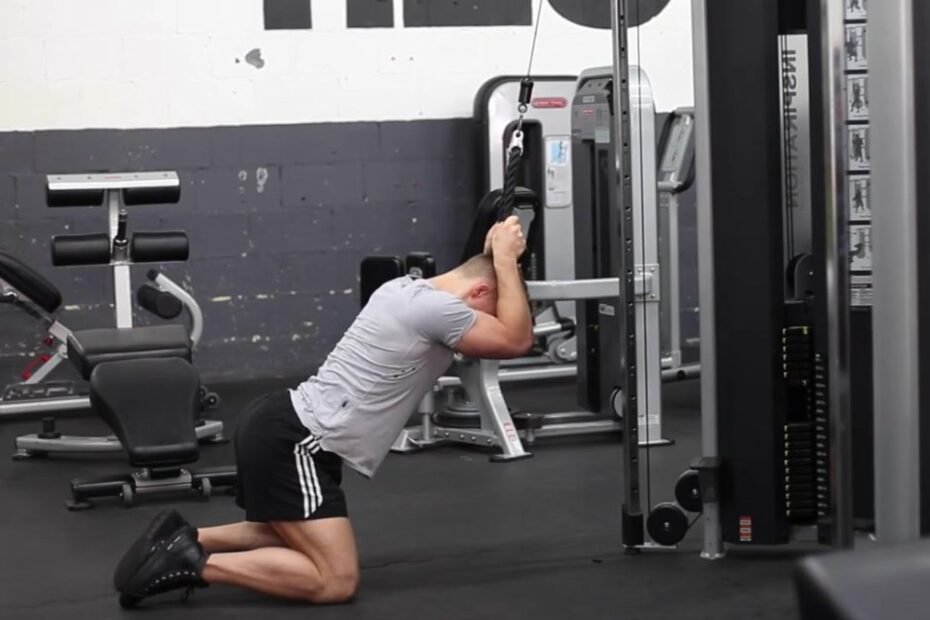Cable crunches are a highly effective and versatile abdominal exercise that engages your core muscles to build strength, stability, and definition. This guide delves into the intricacies of cable crunches, offering step-by-step instructions, insights into the muscles engaged, benefits, variations, alternatives, common mistakes, and essential considerations to help you master this dynamic movement.
Muscles Worked:
Primary Muscles:
- Rectus Abdominis (Front Abs)
Secondary Muscles:
- Obliques (Side Abs)
- Transverse Abdominis (Deep Core)
How to Perform Cable Crunches:
- Setup: Attach a rope attachment to the high pulley of a cable machine. Kneel down in front of the machine, facing the weight stack.
- Grip: Grasp the rope with both hands and position it behind your head, keeping your elbows bent and close to your ears.
- Engagement: Begin by flexing your spine forward, curling your torso downward.
- Contraction: Focus on contracting your abdominal muscles to bring your elbows toward your thighs.
- Stretch: Slowly allow your spine to extend and your torso to return to the starting position.
- Repetition: Complete the desired reps while maintaining controlled movement and muscle engagement.
Benefits of Cable Crunches:
- Targeted Abdominal Engagement: Cable crunches isolate and engage the rectus abdominis for enhanced core strength.
- Flexibility and Range: The movement involves a full range of motion, helping to improve spinal flexibility.
- Dynamic Resistance: Cable tension provides continuous resistance throughout the movement, challenging your muscles effectively.
- Variety: Cable crunches offer an alternative to traditional crunches, introducing variety to your core workout routine.
Variations:
1. Rope Twist Cable Crunch:
- Add a twist to the movement by alternating the rope to each side as you contract your abs.
2. Single-Arm Cable Crunch:
- Perform the crunch while holding one handle of the rope attachment, targeting each side of your core individually.
Alternatives:
1. Weighted Crunches:
- Hold a weight plate on your chest while performing crunches to add resistance.
2. Swiss Ball Rollouts:
- Use a stability ball to engage your core as you roll forward and back, challenging stability and strength.
Common Mistakes to Avoid:
- Neck Strain: Avoid pulling on your neck with your hands; use your core muscles to perform the movement.
- Incomplete Range: Ensure you perform a full range of motion, both in the crunch and the stretch.
- Rushing: Maintain controlled, slow movements for optimal muscle engagement.
Key Considerations:
- Breathing: Exhale as you contract your abs and inhale as you return to the starting position.
- Form: Focus on the quality of your movement rather than the quantity of reps.
- Progression: Gradually increase the weight and intensity as your core strength improves.
Conclusion:
Cable crunches stand as a potent exercise to sculpt and strengthen your core muscles. By mastering its execution, understanding the muscles engaged, appreciating the benefits, exploring variations and alternatives, avoiding common mistakes, and considering key factors, you can seamlessly integrate cable crunches into your fitness routine. Approach this exercise with dedication, proper form, and a commitment to achieving strong and defined abdominal muscles for optimal results.
